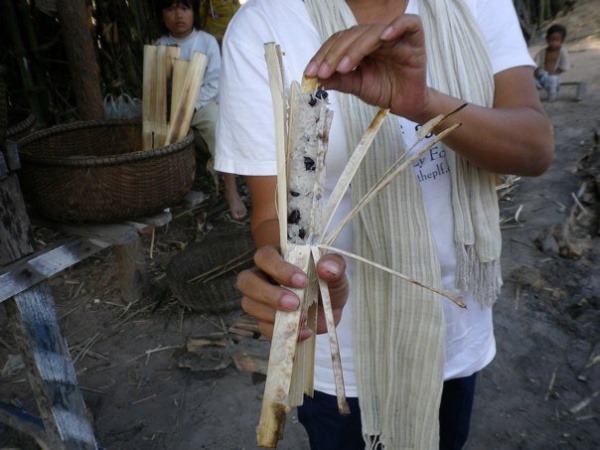Facts About Kralan
Sticky rice in bamboo is a cherished dish across Southeast Asia, where sticky rice is roasted inside specially-prepared bamboo sections, imparting a unique and delightful flavor. This versatile dish can be enjoyed either as a savory meal or a sweet dessert. Its name varies by country: in Burmese, it's known as paung din or kauk hnyin kyi dauk; in Khmer, it's called kralan; and in Thai and Lao, it's referred to as khao lam.
In Malaysia and Indonesia, the dish is known as lemang, a staple during Eidul Fitri celebrations, often served alongside rendang. Each country adds its own twist to the recipe. For instance, in Cambodia, kralan is a festive treat enjoyed during Chinese New Year and Khmer New Year. In Myanmar, paung din or kauk hnyin kyi dauk is a portable version of sticky rice cooked in bamboo, emitting a distinctive aroma when peeled.
Thailand offers a particularly rich variation with khao lam, made with sticky rice, red beans, sugar, grated coconut, and coconut milk, all roasted inside bamboo sections. There are various versions using different types of glutinous rice, and some even feature a coconut custard filling. Thai people often present khao lam to monks as an act of merit, adding a spiritual dimension to this culinary tradition.
The traditional preparation of khao lam involves several steps: cutting a piece of bamboo, cleaning the rice and mixing it with black beans, pouring a coconut mixture into the bamboo sections, and then roasting them until ready to serve.
Beyond being a delicious treat, khao lam holds cultural significance and is recognized as an OTOP (One Tambon One Product) item in Thailand. This designation helps support local communities by providing economic benefits and career opportunities. Thus, sticky rice in bamboo not only delights the palate but also enriches the cultural and economic fabric of Southeast Asia.

 Laos
Laos